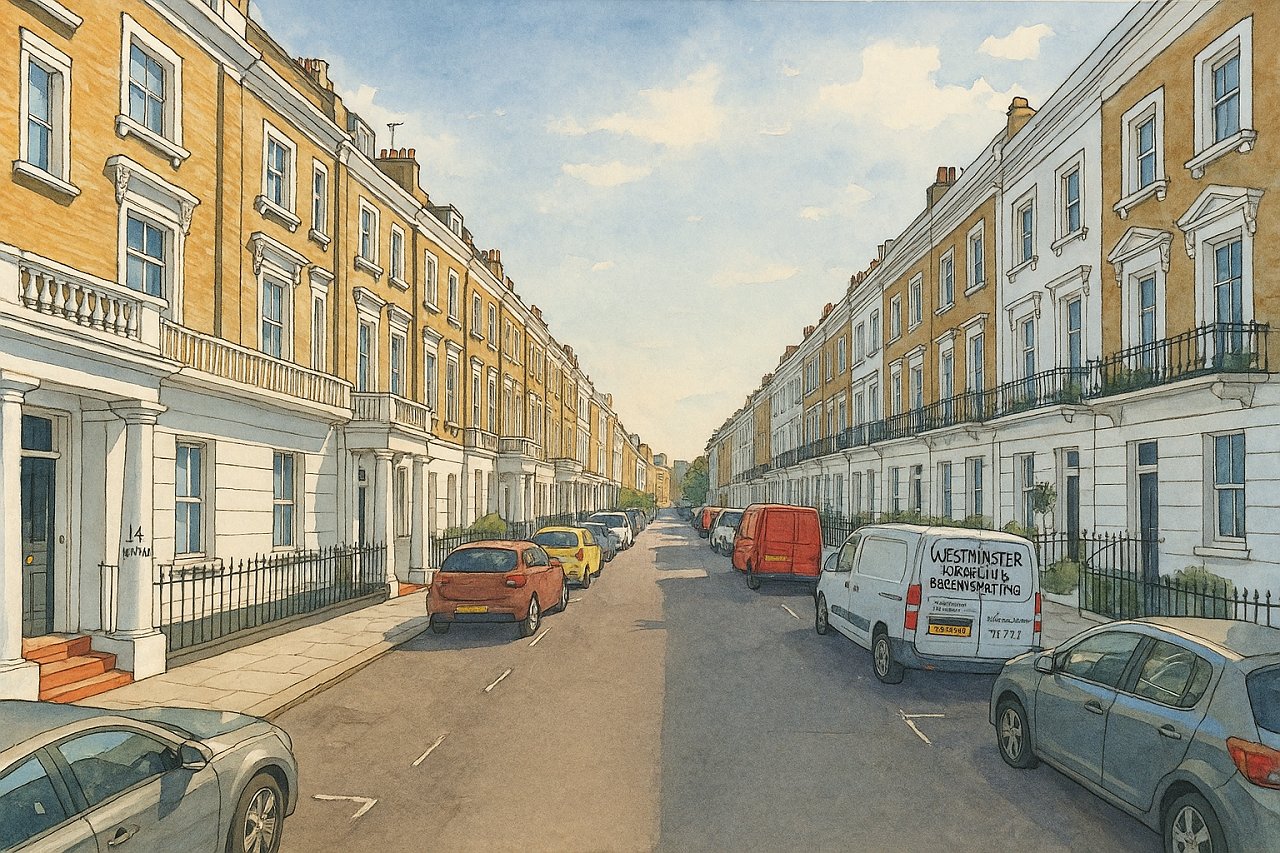
Alderney Street, London
Alderney Street, Westminster SW1
Introduction
Alderney Street is a residential road located in the City of Westminster, specifically within the Pimlico area of central London. It is part of the SW1V postcode district, situated a short walk from both Victoria and Pimlico stations. Although relatively quiet and primarily residential, Alderney Street reflects the quintessential character of 19th-century urban planning in this part of London.
Location and Layout
The street begins at the corner with Hugh Street in the north and extends southeast as a one-way street until it intersects with Warwick Way. Notably, Alderney Street is split at Warwick Way — the two segments do not align directly across from each other.
Continuing southeast from Clarendon Street, the road becomes two-way, passing intersections with Sussex Street and Gloucester Street. From Lupus Street to Charlwood Street, the final segment of Alderney Street is again one-way, this time heading northwest.
Streets connected to Alderney Street
Length and Orientation
In total, Alderney Street measures approximately 350 metres (around 0.22 miles). It runs in a generally southeast-to-northwest direction and is primarily composed of period townhouses, many of which have been converted into flats or small offices.
History and Naming
Alderney Street was developed in the mid-19th century as part of the broader urban expansion of Pimlico, driven largely by the activities of the Grosvenor Estate. Pimlico itself was developed by Thomas Cubitt, the master builder responsible for much of the elegant stucco-fronted architecture still seen today.
The street was named after the island of Alderney, one of the Channel Islands. The pronunciation is typically "ALL-der-nee", represented in the International Phonetic Alphabet as /ˈɔːldəni/  . The naming reflects the mid-Victorian era's fashion of referencing British territories and possessions across the empire.
. The naming reflects the mid-Victorian era's fashion of referencing British territories and possessions across the empire.
Character and Architecture
Alderney Street has a serene, residential character. The buildings are mostly stucco-fronted Victorian terraced houses, often painted in white or pastel tones. Mature trees line some sections, enhancing its leafy and genteel feel. The area is known for being quiet, despite its proximity to major roads and transport hubs.
Points of Interest Nearby
While Alderney Street itself is largely residential, it is close to a variety of local attractions and amenities:
- Pimlico Road antiques and design shops – a short walk to the west.
- Tate Britain – one of London’s major art galleries, located 10 minutes away on foot.
- Pimlico Gardens – small riverside gardens offering a quiet spot to relax.
- Warwick Way and Wilton Road – nearby for cafés, local restaurants, and shops.
Real Estate and Property Values
As of May 2025, property prices on Alderney Street range between £1.1 million and £2.5 million for flats and maisonettes, depending on size and condition. A typical converted flat here may measure around 650–900 square feet (60–84 sq metres). Whole townhouses, when available, can exceed 2,500 square feet (232 sq metres) and command significantly higher prices.
Compared to the London average, property prices on Alderney Street are above average due to the street’s prime location, architectural heritage, and transport links.
Transport Connections
Nearest London Underground Stations
- Pimlico Station – on the Victoria line, about a 6-minute walk southeast.
- Victoria Station – on the Victoria, District, and Circle lines, around 10 minutes’ walk to the north.
Nearby Bus Stops
- Lupus Street / Pimlico Station (Stop P) – serves routes 24, 360, and C10.
- Warwick Way / Tachbrook Street – routes 2, 36, 185, and N2 among others.
Fun Fact
Alderney Street is one of several in the area named after the Channel Islands (such as Jersey Street and Guernsey Street, although now renamed or absorbed), reflecting Britain’s proud imperial reach during the 1800s. While there are no current street parties or public events here, Alderney Street is known locally for its festive Christmas window displays, especially in years when the residents coordinate decorations.
Quick Facts
- Borough: City of Westminster
- Postcode: SW1V
- Length: Approximately 350 metres
- Traffic Flow: Mixed – one-way and two-way sections
- Named After: Alderney, Channel Islands
- Pronunciation: ALL-der-nee (/ˈɔːldəni/)
- Nearest Tube Stations: Pimlico (Victoria line), Victoria (Victoria, Circle, District)
- Nearby Bus Routes: 2, 24, 36, 360, C10, N2
- Property Prices (May 2025): £1.1M–£2.5M+ for flats; whole houses higher
- Notable Nearby: Tate Britain, Pimlico Gardens, Pimlico Road shops
- Street Character: Quiet, residential, with historic Victorian townhouses
Map of Alderney Street, London

Painting of Alderney Street, London (View image in full size)